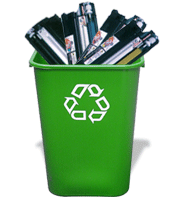As the New Year is finally here, it is a time to reflect on the past and look forward to what is to come in the future. This is where the infamous New Year’s Resolutions come into play; some are personal, some are family-oriented, and others are professional. To help reach these goals, we have found some useful (and free!) printables geared towards some of the most common resolutions made every year. Even if these don’t match what you plan to get accomplished this year, they are worth using as helpful tools at home or the office.
Keep a Clean Home: Cleaning Checklist
Cleaning the house is a rather grueling task that can take up your entire day. Rather than working hard for many hours, why not do a little each day so the burden is less. This checklist helps keep you on track with small, daily tasks and chores that leaves you with the whole house being cleaned by the end of the week. The best part of this list… it’s customizable! This checklist will have your house looking spotless in a manageable way.
Lose Weight: Food & Fitness Journal
Many people commonly make it a priority to lose weight and get in shape at the beginning of the year; to assist with that we have provided a whole packet of useful printables to help you work towards a healthy 2016. There is a food journal to document everything you eat each day so you can evaluate and track your eating habits, a workout planner to keep you on track with cardio and strength training sessions, a water tracker to make sure that you stay hydrated, as well as healthy meal planner.
Save Money: Monthly Budget Planner
One of the more popular resolutions each year is to get out of debit or to manage money better; this Budget Planner Sheet will help a lot with that! This printable is a great visual way to see your debits, plan out your expenses, and work towards maximum savings. Managing your finances can be stressful and difficult to understand, this is great way to better focus on your goals.
Learn Something New: Goals List
If you don’t know where to start with your annual goals, this list is for you. This printable promotes you to reflect on goals reached in the previous year as well as encourages you to meet multiple types of goals for the year to come. This fantastic form is suitable for office employees, team members, families, or personal use. We suggest keeping them so you can look back at previous set ambitions and reflect.
Get Organized: Meal Planner
Planning meals ahead of time is a great way to stay organized throughout week. This Meal Planner with Grocery List is a useful printable for family dinners, weekday lunches, or for the holiday season. By planning your meals at the beginning of the week you can save money, time, and encourage yourself to eat healthy… all popular resolutions! The design of this sheet is great because it allows you to easily tear off the grocery list so you can take it shopping with you!
Travel More: Family Travel Checklist
Whether you are packing for yourself or a whole family, we all get that feeling that we ‘forgot something’ when packing for a trip. Well fear not with this helpful checklist! It easily breaks down every item that needs to be packed by each person in your family. The items on the list range from clothing, toiletries, beachwear, even carry-on items. Be at ease on your next trip when you pack with this trusty list!















